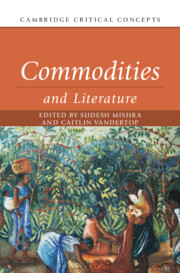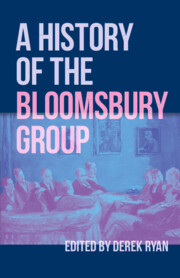Refine search
Actions for selected content:
451 results
Curated Conversation 2: Decolonising the Arts in Latin America
- from Part I - Art and Anti-Racism in the Nation
-
-
- Book:
- Art and Anti-Racism in Latin America
- Published online:
- 19 December 2025
- Print publication:
- 29 January 2026, pp 127-134
-
- Chapter
-
- You have access
- Open access
- HTML
- Export citation
1 - Unveiling Racialised Difference in Colombia
- from Part I - Art and Anti-Racism in the Nation
-
-
- Book:
- Art and Anti-Racism in Latin America
- Published online:
- 19 December 2025
- Print publication:
- 29 January 2026, pp 37-71
-
- Chapter
-
- You have access
- Open access
- HTML
- Export citation

The Indian Ocean and the Historical Imagination in Afro-Asian Fiction
-
- Published online:
- 19 December 2025
- Print publication:
- 31 January 2026

A Hundred Flowers
- How Literature Shaped Maoism
-
- Published online:
- 12 December 2025
- Print publication:
- 08 January 2026

Wales, Romanticism, and the Making of Imperial Culture
-
- Published online:
- 12 December 2025
- Print publication:
- 22 January 2026
Taylor Swift’s The Life of a Showgirl: The Legacy of a Cult Classic
- Part of
-
- Journal:
- Public Humanities / Volume 1 / 2025
- Published online by Cambridge University Press:
- 12 December 2025, e165
-
- Article
-
- You have access
- Open access
- HTML
- Export citation
Introduction
-
- Book:
- American Performance in 1976
- Published online:
- 27 November 2025
- Print publication:
- 11 December 2025, pp 1-43
-
- Chapter
- Export citation
Chapter 10 - Creating the People
- from Part III - ‘One of Us’
-
-
- Book:
- 'The People' and British Literature
- Published online:
- 11 December 2025
- Print publication:
- 11 December 2025, pp 159-174
-
- Chapter
- Export citation

Translating His-stories
-
- Published online:
- 06 December 2025
- Print publication:
- 08 January 2026
-
- Element
-
- You have access
- HTML
- Export citation
Tradition and the quadruple talent: Intertextuality in the Beatles’ songbook
-
- Journal:
- Popular Music , First View
- Published online by Cambridge University Press:
- 05 December 2025, pp. 1-13
-
- Article
-
- You have access
- Open access
- HTML
- Export citation

Race Class
- Reading Mexican American Literature in the Era of Neoliberalism, 1981-1984
-
- Published online:
- 04 December 2025
- Print publication:
- 08 January 2026
-
- Element
- Export citation
Chapter 22 - ‘A curious creature from the market’
- from Part IV - Worlds of Print
-
-
- Book:
- African Literature in Transition
- Published online:
- 23 October 2025
- Print publication:
- 06 November 2025, pp 427-444
-
- Chapter
- Export citation
2 - Value in Motion: The Inheritance of Merchant Capital and Debates over Credit
-
- Book:
- The Capitalist Self
- Published online:
- 12 October 2025
- Print publication:
- 30 October 2025, pp 57-100
-
- Chapter
- Export citation
Chapter 3 - The Predictive Mind in Literature
-
- Book:
- Cognition and the Arts
- Published online:
- 14 September 2025
- Print publication:
- 23 October 2025, pp 64-89
-
- Chapter
- Export citation
Introduction
-
- Book:
- American Modernism and the Cartographic Imagination
- Published online:
- 09 October 2025
- Print publication:
- 23 October 2025, pp 1-29
-
- Chapter
- Export citation

Commodities and Literature
-
- Published online:
- 14 October 2025
- Print publication:
- 09 October 2025

A History of the Bloomsbury Group
-
- Published online:
- 09 October 2025
- Print publication:
- 23 October 2025
Reading Commodities
-
-
- Book:
- Commodities and Literature
- Published online:
- 14 October 2025
- Print publication:
- 09 October 2025, pp 1-28
-
- Chapter
- Export citation
Chapter 13 - Water in World Literature
- from Part III - Applications
-
-
- Book:
- Commodities and Literature
- Published online:
- 14 October 2025
- Print publication:
- 09 October 2025, pp 228-243
-
- Chapter
- Export citation
20 - Christology and Political Theology
- from Part IIIb - Christology and Philosophical Theology
-
-
- Book:
- The Cambridge Companion to Christology
- Published online:
- 15 September 2025
- Print publication:
- 02 October 2025, pp 340-358
-
- Chapter
- Export citation
